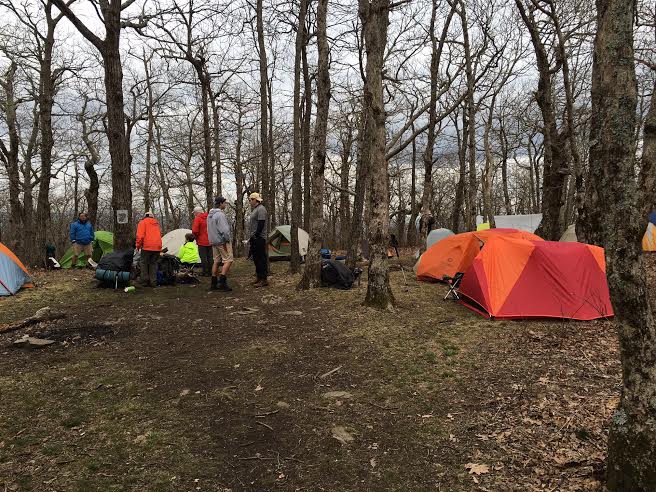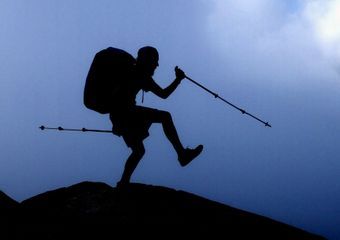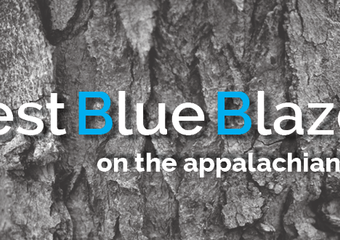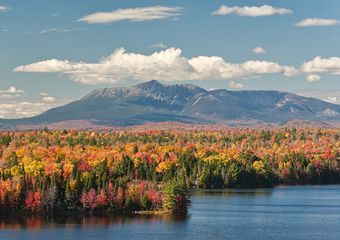13 Things 2017 Appalachian Trail Thru-Hikers Need to Know
Setting out to thru-hike is a complicated, somewhat overwhelming process, and it’s impossible to know what the entirety of 2,000+ miles will throw at you. With this in mind, we reached out to our thru-hiker friends for any topics they wish they’d known about before setting out on their hike. From National Park permits to new bear safety recommendations, keep these trail know-hows in your back pocket and worry a little less during your hike.
Safety Considerations

1) Drought Reminders and Fire Safety
As of December 2016, fires along the southern portion of the Trail were still raging, and even as the season approaches, there are sections of trail affected by last season’s fires. It has been dry out there over the past year, elevating fire risk for 2017. It’s more important than ever to stay up-to-date on what is ahead of you, and be conscientious of alternative routes and adjustments. It is critical all hikers respect any trail closures that might occur, and remember that ATC-mandated alternate routes will not delegitimize your thru-hike. In the case of closures and fires near the trail, campfire regulations will almost certainly be in place. For reference, here is an ATC press release from November 2016 detailing closures and campfire bans. Droughts and fires mean seasonal or unpredictable water sources might be dry as well.
2) Bear Safety Update
The ATC is now recommending the use of bear canisters for the entire length of the trail. We know the inconvenience of this is frustrating for thru-hikers, but we also know that respect for the environment and the animals can’t be ignored. While bear canisters are the most fool-proof option, the obvious downside is weight and bulk. Another great option is the combination of an Ursack bear bag and Loksak scent-proof food baggies. It’ll be like carrying your normal food stuff-sack with a little extra bulk, and a lot of extra security against our ursine friends.
Hiker Numbers
3) Register! Your! Hike!
A few years ago, the Appalachian Trail Conservancy rolled out this nifty, easy-to-use registration tool on their website. It benefits both the hiker and the ATC—the thru-hiker gets to see if their chosen start date looks like a mass gathering for a festival, and it allows the ATC to gauge the busiest days and starting locations. It’s not required, and you aren’t married to your start date, but we encourage all upcoming thru-hikers to register. Tip: The first day of the month (March and April in particular) are always going to be insane, and Saturdays are nuts too.
4) Consider a Non-Traditional Hike:
There are a lot of merits to flip-flopping. The flexibility is key: flip-floppers can choose their start location and flip location, and it can change on a whim. Following the best weather on the trail is a huge bonus as well. While March in Georgia is still cold as heck, flip-floppers start later and can find their ideal weather spot. They can hit New England before fall freezes in, and when the weather is chilliest up north, they can be happily down south. Obviously a major bonus is avoiding the crush of hikers at the start. You’ll get your fair share of hiking with and through bubbles, but you’ll enjoy less crowded campsites, amenities, and a quieter experience overall. If you’re still not convinced, read this.
Permits

5) The Smokies
This is the only tricky one. You will have to get online and register your best guess at when you will enter the Park. You can access the permits through the NPS website, and there are several locations as you approach this section of trail to get online and print them out. The cost is $20 per permit, and you must register within 30 days of entering the Smokies, and since you need to have a relatively sure date of entry, you can’t get your permit way before you start your hike. Hostels and outfitters leading up to the Smokies have computers you can use to purchase and print your permit. Bluff Mountain Outfitters has a computer and printer. You print your permit and leave one part of it at your point of entry, and carry the other part with you. We recommend leaving the permit in an easily accessible Ziplock baggie, because you will likely be stopped by a very pleasant Park Ranger and asked to procure said permit.
6) Shenandoah
Thru-hikers entering Shenandoah National Park might enter from different places depending on whether or not they chose to aquablaze. There are visitor contact stations at different road entry points, and self-registration is available at the north and south entry points of the Park. Permits are free but all backcountry travelers are required to have one.
7) Baxter State Park:
Baxter State Park recently announced that they will be limiting the number of AT Long-Distance Hiker Permit Cards starting this season. This applies to all Northbound and Southbound Thru-hikers, Section Hikers and Flip-Flop AT Hikers entering BSP and taking the Hunt Trail up Katahdin. Here is their official announcement, and they mentioned it on their Facebook page. You can pick up a permit card and get it stamped at Park headquarters or Katahdin Stream Campground, then get your hiker registration sheet. There is no fee for permits, and while they are limiting the number (different amounts for NOBO, SOBO, and Flip-Floppers), they are issuing over 400 more permits than totaled last year, and in the chance you don’t get one, you’re not SOL. More info can be found in our summary here.
Respect The Trail

8) Leave No Trace
The AT is as healthy as it is thanks to the wonderful hikers who consistently follow and spread the word of LNT. If you don’t know the 7 principles of Leave No Trace, please learn them, practice them, and spread the good word. They include things everyone should be doing anyway, like respecting wildlife, leaving what you find, minimizing campfire impact, camping on durable surfaces, and more. We encourage everyone to check out the full kit n’ caboodle here.
9) Thru-Hiker’s Code of Conduct
A few bad apples can spoil the bunch, so let’s make those apples few and far between by spreading the word of the Thru-Hikers Code of Conduct. There will always be a few who disrespect the Trail and the community, but if we keep working to lessen their impact, we will keep the good reputation of the thru-hiking community. Follow LNT, respect Park authorities, be respectful and appreciative of all Trail communities, amenities, trail angels, and trail towns, and more.
Illness / Disease Avoidance

10) NORO: You Don’t Want It
Norovirus is like the stomach bug from hell, and it strikes certain bubbles, hostels, and shelters every year. If you hear of a noro outbreak at a nearby hostel? Don’t stay there! While noro might be unavoidable depending on your bubble, you can mitigate the risk of infection by using hand sanitizer frequently, steering clear of shelters you’ve heard were infected, and doing the thru-hiker fist bump, not hand shake. Again: You do not want noro. Here are more nasty details about noro and how to stay the hell away from it.
11) Lyme disease
Ticks are more common in the mid-Atlantic states—you can sit down for a quick snack and take four of these evil hitchhikers with you, digging into your flesh as you walk away. Learn to recognize deer ticks, use heavy-hitting bug spray, protect yourself with your clothing, and perform tick checks after breaks and before going to sleep. If the tick has been attached for less than 36 hours, you could be ok. If you think it’s been burrowed for longer than that, pull each and every bit of the tick off with tweezers, and watch out for the telltale signs of Lyme. This article has all the info you and your stomach can handle about ticks and tick-ridden illness.
Make the Most Of Your Hike

12) Follow AT Expert Advice
You can find the AT Expert Advice page on Facebook here. They stay up-to-date with Trail-related events, post frequent LNT reminders, and the page is a great resource for questions that you just can’t find answers to anywhere else. They’ll also post little-known facts and fun trivia for campfire convo. Definitely worth a follow.
13) Seriously, Explore Some Blue Blazes
More than likely, you’ll only get to thru-hike the AT once. Do it up. There are so many amazing natural features, interesting loops, and odd anomalies a short distance from the white blazes. We’ve profiled some incredible blue-blazed trails here and here.
Did we miss anything upcoming thru-hikers simply need to know? Leave it in the comments. Oh, and for those who care about connections, Verizon has the best coverage on the AT… by a long shot. This may or may not matter to you. Happy hiking!
Further Reading:
This website contains affiliate links, which means The Trek may receive a percentage of any product or service you purchase using the links in the articles or advertisements. The buyer pays the same price as they would otherwise, and your purchase helps to support The Trek's ongoing goal to serve you quality backpacking advice and information. Thanks for your support!
To learn more, please visit the About This Site page.










Comments 1
Ursack/Locsack combo, yes! Works like a charm. Even shelter mice and other critters will have no idea you have food.
Here is an article I wrote for those with questions about the Baxter State Park permits, with some history so you have context: http://claybonnymanevans.com/katahdin-permits-for-17-at-hikers-dont-panic-and-dont-be-a-dk/
Enjoy it, ’17 hikers. I think of the trail every day. Often. And dream of it at night.
Pony (Colorado Trail ’15, AT ’16)